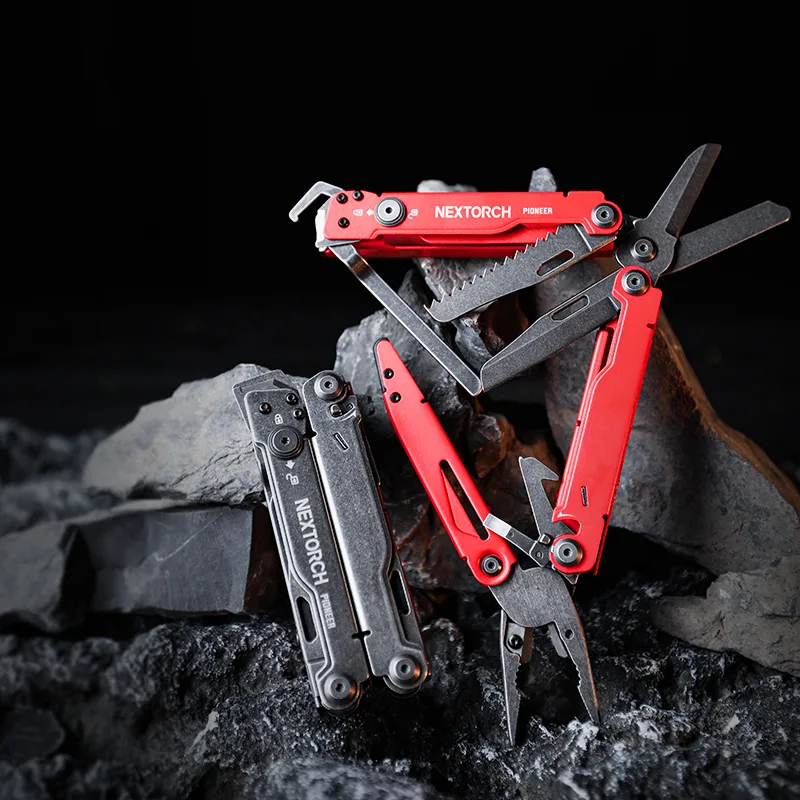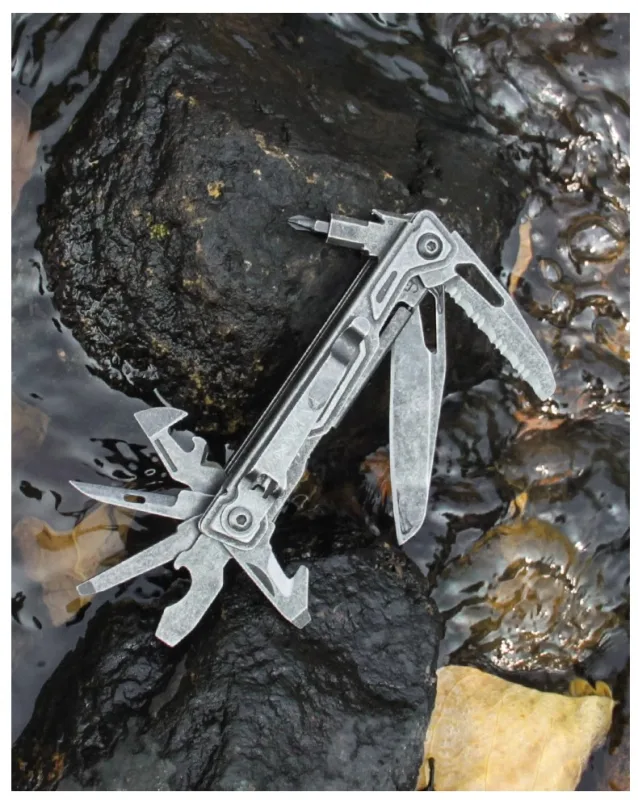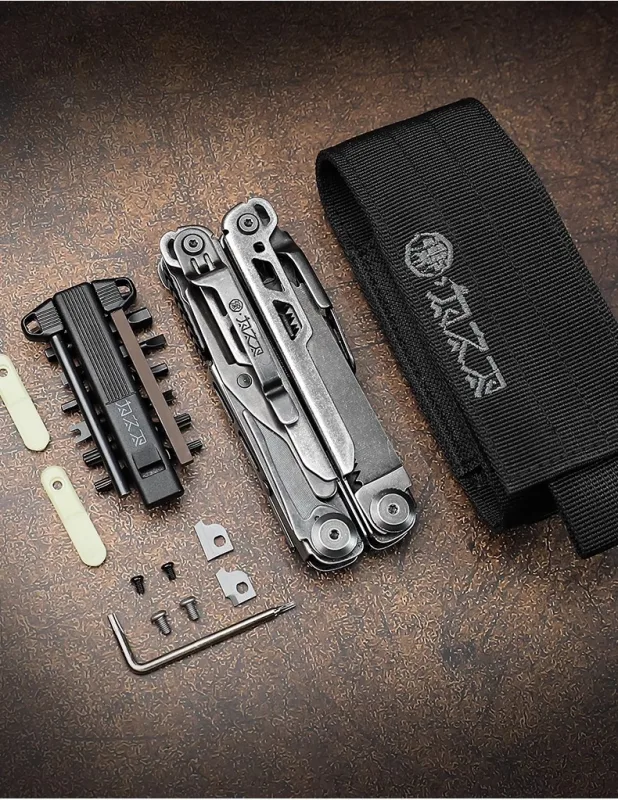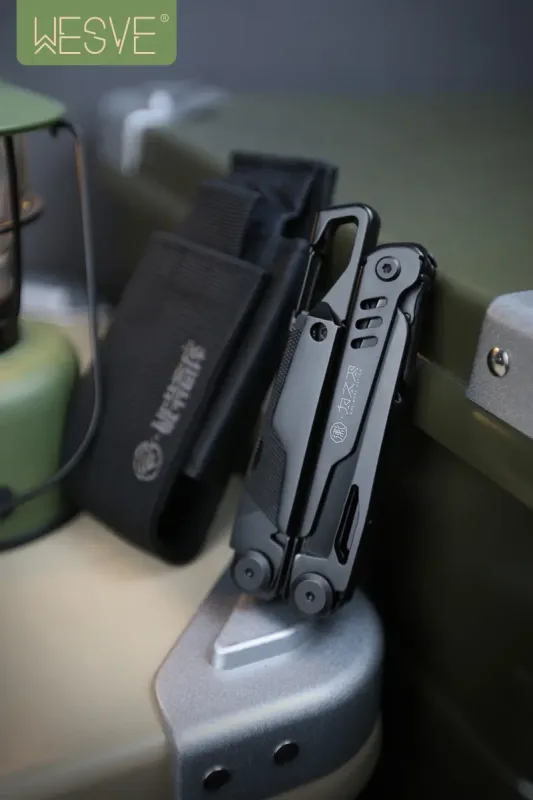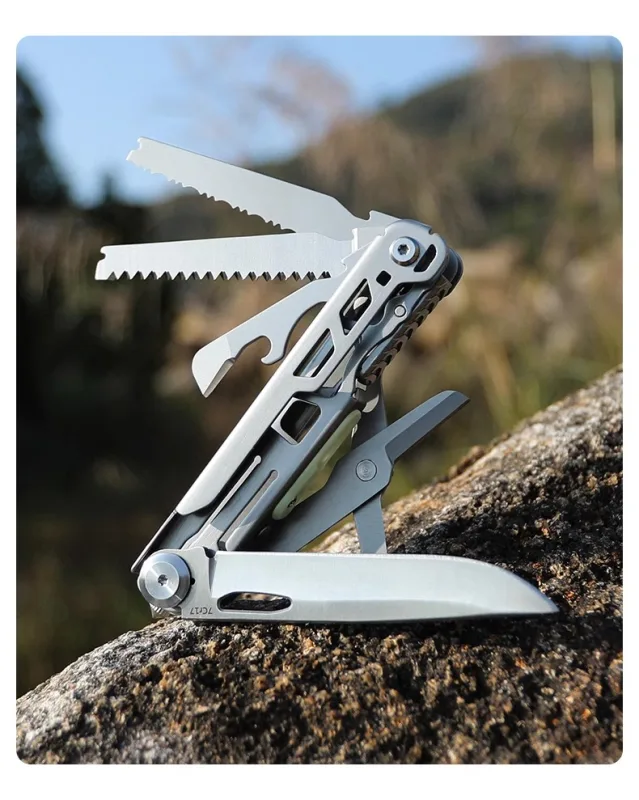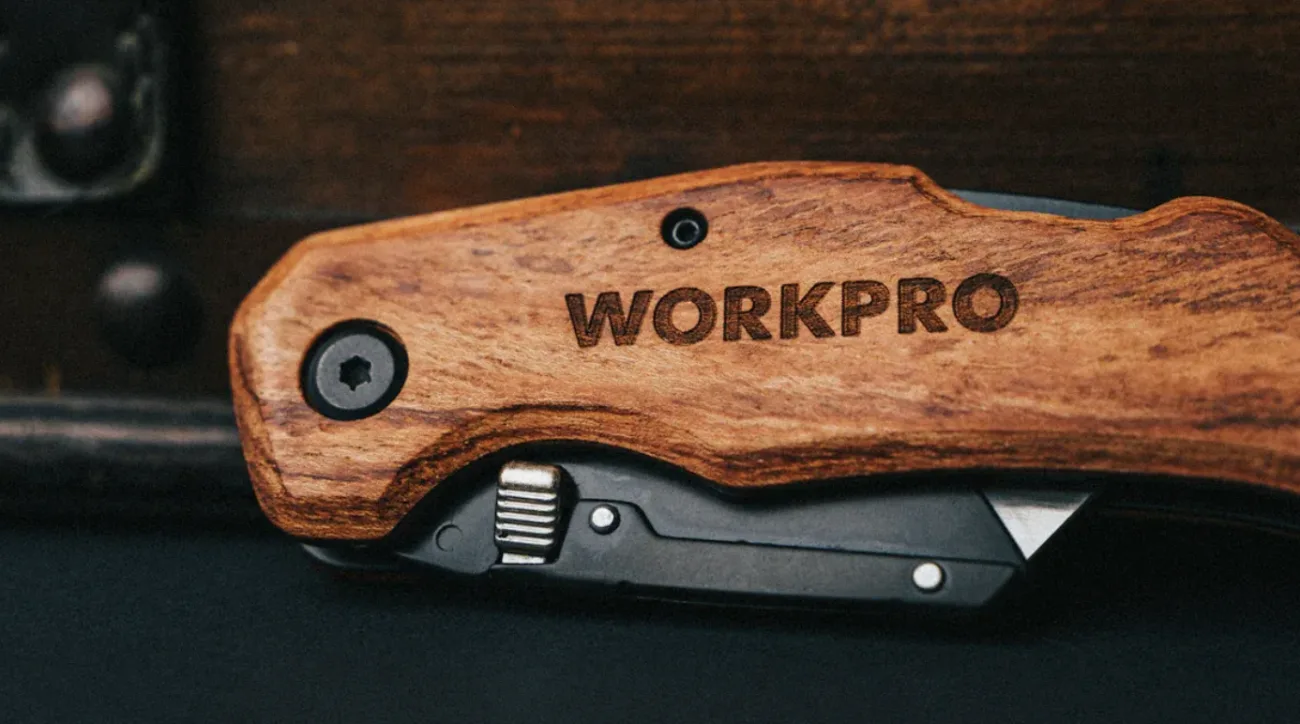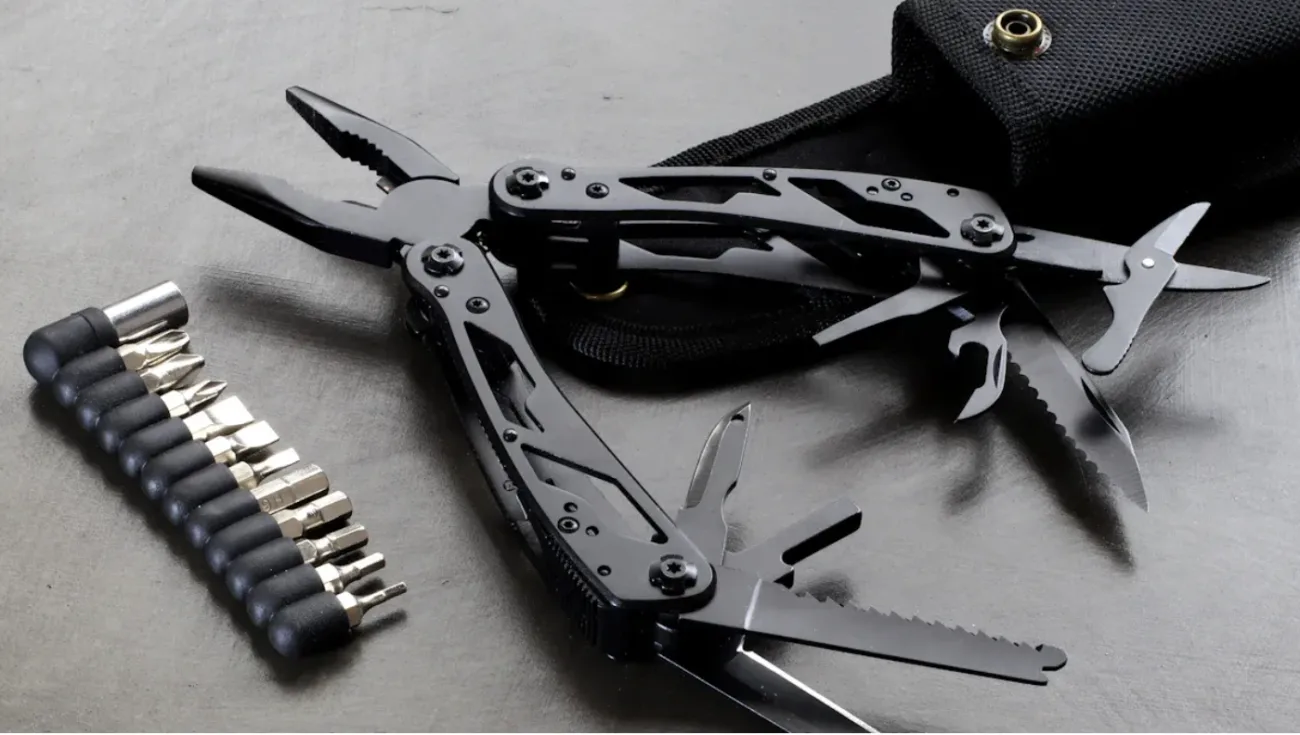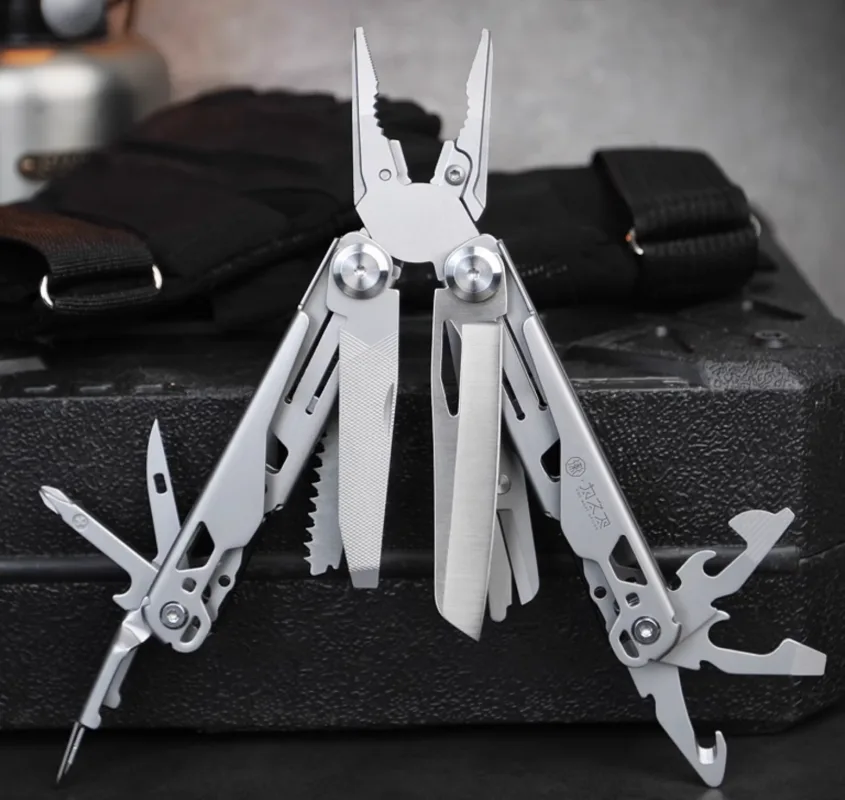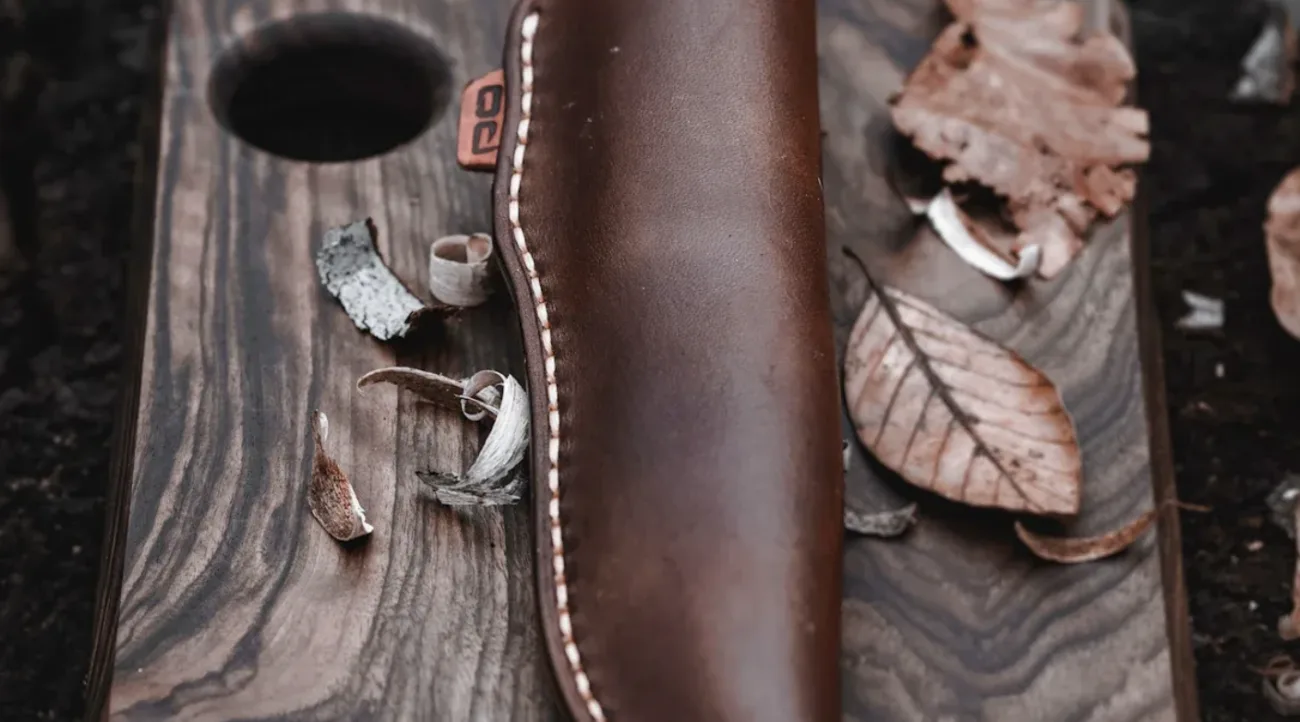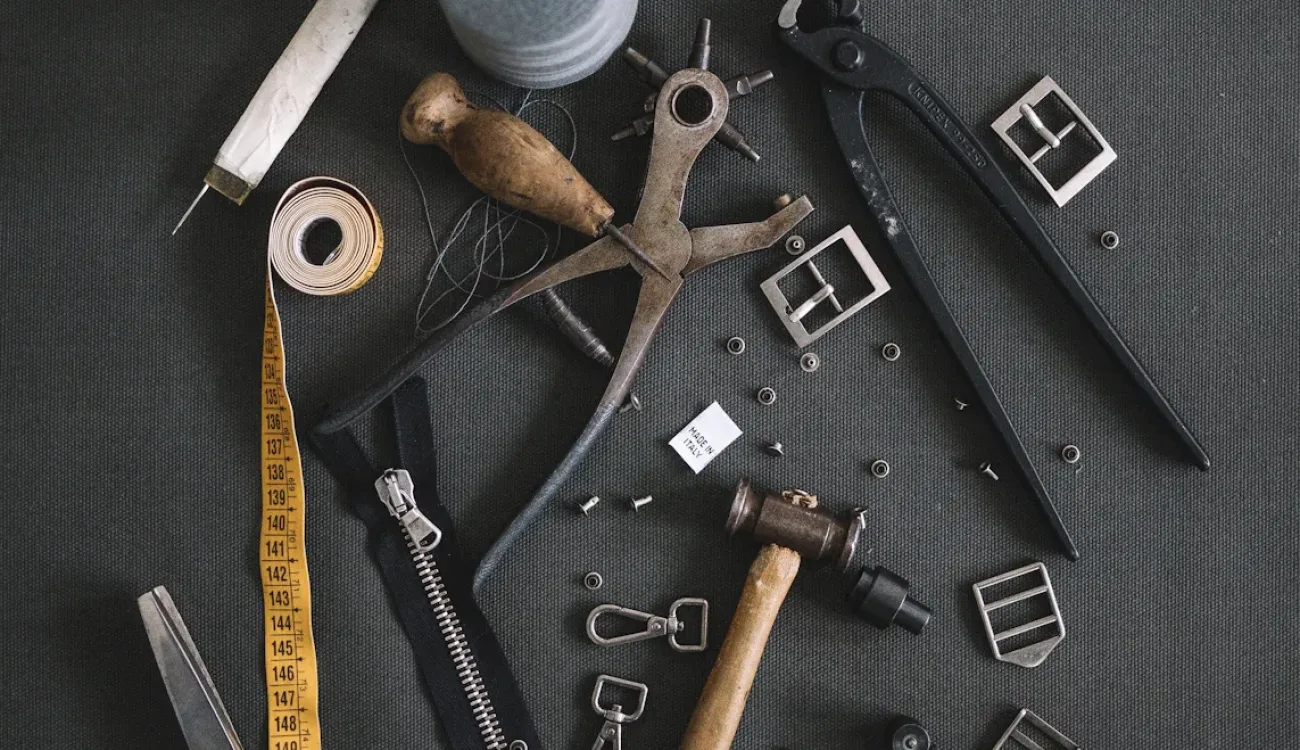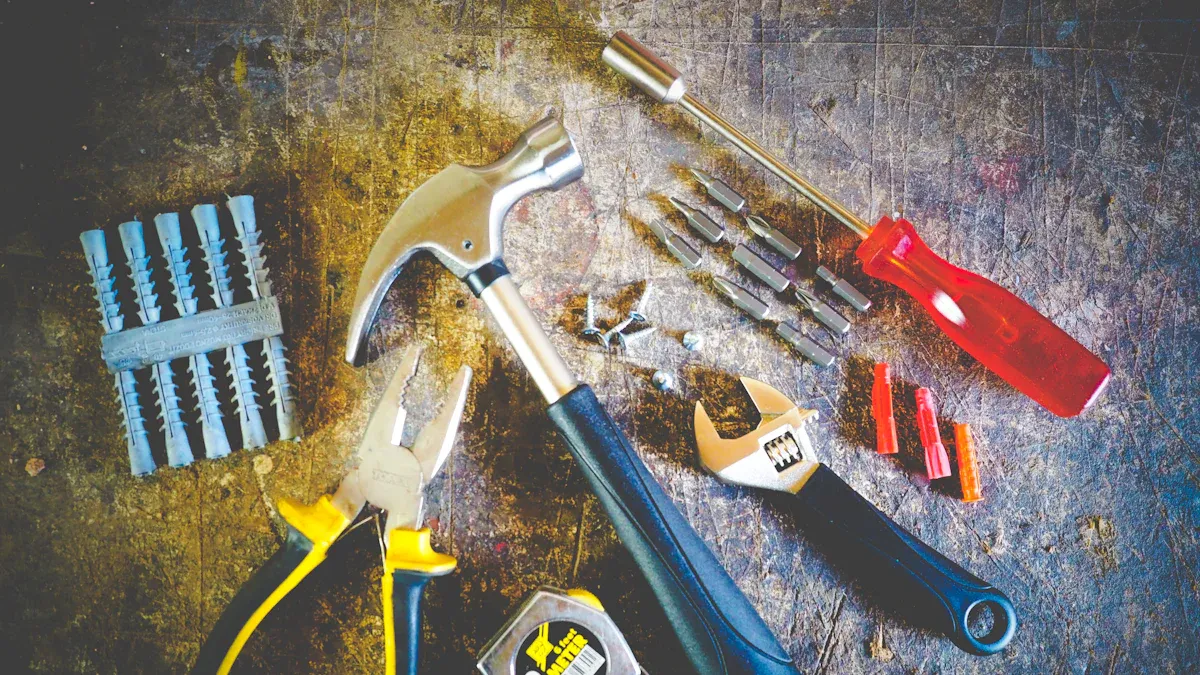A multitool is a small, all-in-one gadget for many tasks. It usually has tools like pliers, knives, and screwdrivers in one design. You can use it for quick fixes, repairs, or outdoor activities. Its usefulness makes it important for both workers and hobbyists. Whether fixing a screw or cutting tough stuff, it saves time by keeping tools handy.
Key Takeaways
- A multitool has tools like pliers, knives, and screwdrivers. It is small and handy for quick fixes or outdoor use.
- Pick a multitool that fits your needs. Use it for home repairs, work tasks, or outdoor fun to match your activities.
- Take care of your multitool by cleaning and sharpening it. This helps it last longer and work well.
- Oscillating multitools are great for small, detailed jobs in tight spots. They are good for tasks like sanding or scraping.
- Buying a good multitool saves time and energy. It is a helpful tool for many jobs, from DIY projects to emergencies.
What Is a Multitool?
Definition and Basic Functionality
A multitool is a small, handy gadget with many uses. It combines tools like cutters, sanders, and scrapers in one device. You can use it for fixing things, work projects, or outdoor fun. Its quick-switch ability makes it useful in many situations.
Experts say a multitool is a must-have for daily tasks. Its many uses let you handle jobs without needing extra tools.
Here’s a simple list of common multitool uses:
| Core Functionality | Applications |
|---|---|
| Sawing | Woodwork, plumbing, and tile cutting |
| Sanding | Fixing windows, sanding tight spots |
| Cutting | Trimming frames, cutting pipes |
| Scraping | Removing glue or seals in plumbing |
| Rasping | Fixing and caring for boats |
| Filing | Building and installing on job sites |
| Changing accessories | Swapping tools in under 3 seconds |
Key Components and Design
Multitools are made to be easy to carry and use. They often include pliers, knives, screwdrivers, and other tools. Each part is built into the frame for strength and convenience.
Some multitools have special tools like saws or files for extra tasks. For example:
- Pliers: These can grip, bend, or cut wires easily.
- Screwdrivers: Both flathead and Phillips types handle different screws.
- Knives: Small blades are great for cutting ropes or opening boxes.
The design is compact, so you can keep it in your pocket or on your belt. This makes sure you always have the right tool nearby.
How Oscillating Multitools Operate
Oscillating multitools work differently than spinning tools. Their head moves side to side in a small motion. This lets you do detailed work in tight spots without causing damage.
The tool’s flexibility comes from its quick-change attachments. You can switch blades, sanding pads, or scrapers to match the task, like cutting or sanding.
| Feature | Description |
|---|---|
| Oscillation Mechanism | The head moves side to side around a center point. |
| Testing Methods | Tried on wood, plastic, and metal for performance. |
| Application | Handles tasks like cutting and sanding by changing parts. |
This motion makes multitools perfect for precise jobs in small spaces. Whether fixing a window or removing old glue, the tool’s flexibility helps you finish tasks quickly.
Uses of a Multitool
Everyday Household Tasks
A multitool makes home chores much easier. Use it to tighten screws, cut wires, or smooth rough edges. Its small size lets you fix things without needing a big toolbox. For instance, you can quickly cut wood or scrape old paint from windows.
Multitools are great for small DIY projects too. If you like crafting or fixing things at home, they help shape materials or put furniture together. Their many uses make them handy for everyday repairs.
Tip: Store your multitool in a drawer or clip it to your belt for quick access when something breaks.
Professional and Trade Applications
Workers in many jobs use multitools because they save time. In construction, they help with cutting, sanding, and smoothing materials. Car mechanics use them for fixing parts and polishing surfaces. Electronics workers rely on them to fix and build tiny components.
Emergency workers also use multitools. They cut through barriers or make quick fixes during emergencies. Military multitools are built for field repairs and keeping gear in good shape.
- Jobs that use multitools:
- Construction: Cutting, sanding, and scraping jobs.
- Automotive: Fixing, polishing, and maintaining vehicles.
- Electronics: Building and fixing small parts.
- Emergency services: Fast fixes in urgent situations.
Outdoor and Survival Scenarios
Multitools are super useful for outdoor adventures. Whether camping, hiking, or fishing, they help with many tasks. Use them to cut rope, open cans, or fix broken gear. Their lightweight design makes them easy to carry in a bag.
In survival situations, multitools can save lives. Use them to build shelters, start fires, or prepare food. Their many features make sure you’re ready for anything in the wild.
Note: Pick a multitool made from strong materials for outdoor use. It needs to handle tough conditions.
Applications of a Multitool
Cutting, Sanding, and Grinding
A multitool is great for cutting, sanding, and grinding jobs. Its side-to-side motion cuts wood, metal, or plastic without harm nearby. Sanding parts smooth surfaces, while grinding tools polish or remove extra material.
Pick a multitool with faster speeds and wider angles for better results. Tools with over 18,000 OPM and angles above 3.2° work faster and more accurately. Less vibration also helps you stay in control and reduces hand strain.
Here’s how different multitools perform in cutting tests:
| Model | Average Cutting Time |
|---|---|
| Ridgid R86242 | 6.36 seconds |
| Flex FX4111 | 6.68 seconds |
| Milwaukee 2836 | 7.48 seconds |
| Hilti SMT 6-22 | 8.21 seconds |
| Fein AMM700MAX | 9.03 seconds |
| Bosch GOP18V-34N | 9.52 seconds |
| Makita XMT04 | 12.10 seconds |
| DeWalt DCS356 | 17.32 seconds |
| Ryobi PBLMT51 | DNF |
Drilling, Screwing, and Fastening
A multitool makes drilling, screwing, and fastening simple. Add drill bits or screwdriver heads to handle these tasks easily. You can drill holes, tighten screws, or secure bolts without switching tools.
Choose lightweight multitools with comfy handles for better control. These features help you work in tight spots. Less vibration also makes delicate tasks easier to manage.
Precision Tasks and Tight Spaces
Multitools are perfect for detailed work in small spaces. Their small size and side-to-side motion help in corners or narrow gaps. Use them to trim, sand, or scrape without harming nearby areas.
Find multitools with adjustable speeds and quick-change parts for flexibility. Low vibration and good handles make them easier to control. These features are great for careful, detailed jobs.
Tip: Clean your multitool often to keep it working well in tight spaces.
Multitool Accessories
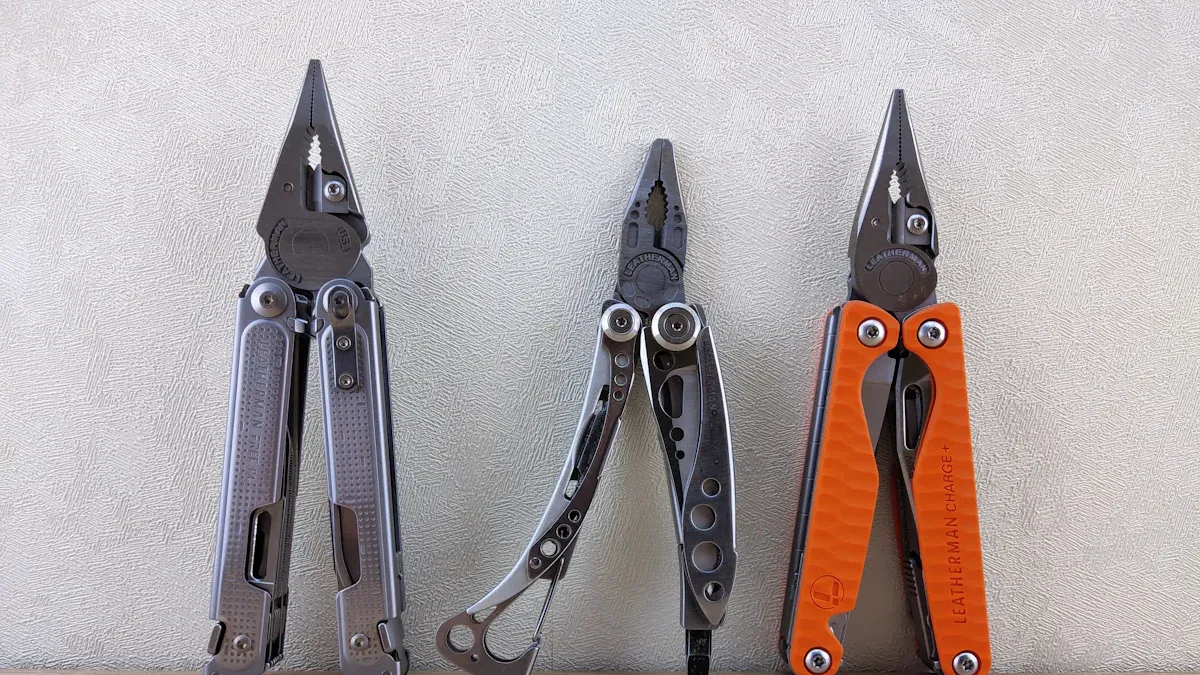
Common Attachments and Their Uses
Multitools have many attachments for different tasks. Each tool has a specific job, making multitools useful for various needs. For example, cutting blades are great for woodwork or remodeling. Sanding pads help smooth rough surfaces. Precision blades are perfect for small, detailed tasks in tight spaces.
Here’s a simple comparison of multitool models and their features:
| Multitool | Features | Benefits |
|---|---|---|
| Leatherman Signal | 19 tools like pliers, knife, saw, firestarter, and whistle | Great for outdoor use, strong for many tasks, includes safety tools for emergencies. |
| Leatherman Free T4 | 12 tools like scissors, awl, and tweezers | Small for daily use, well-made, good for small repairs and tasks. |
These tools make multitools helpful for both everyday and special jobs.
Choosing the Right Accessory for the Job
Picking the right attachment helps your multitool work better. Use fine-tooth blades for wood and plastic. Carbide blades are best for cutting metal. If you need many options, get an accessory kit with different tools.
Here’s a guide to help you decide:
| Accessory Type | Purpose | Recommendation |
|---|---|---|
| General Cutting Blades | For woodwork and remodeling | Use fine-tooth blades for wood and plastic; carbide blades for metal. |
| Accessory Kit | Ready for many tasks | Includes different blades and tools. |
| Dust Extractor | Keeps work area clean and clear | Connects to a vacuum to remove dust. |
| Precision Blades | For small, detailed cutting | Use precision blades for better accuracy. |
Think about the material and precision needed before choosing accessories.
Tips for Maintaining Accessories
Taking care of your multitool keeps it working well. Clean and maintain it to make it last longer. Follow these tips to keep your tools in good shape:
- Let tools cool after heavy use to avoid damage.
- Clean attachments after each use to stop rust or buildup.
- Sharpen blades often to keep them cutting well.
- Tighten screws and bolts to keep tools secure.
- Store multitools in a dry, safe place to avoid harm.
By doing these steps, your multitool and its parts will last longer and work better for years.
Unique Features of Multitools
Advantages of Oscillating Multitools
Oscillating multitools have special benefits that make them different. Instead of spinning, they move side to side for tasks like cutting or sanding. This motion, created by Fein, moves the tool’s head a few degrees back and forth. It can do this up to 20,000 times per minute. The small movement makes it great for tight spaces or fixed materials.
Oscillating multitools are perfect for tricky jobs. They can make flush cuts, plunge cuts, and scrape glue easily.
You can use them for:
- Taking grout out of tiles.
- Sanding in tight corners.
- Scraping glue off surfaces.
- Making precise cuts in small spaces.
These tools won’t replace big tools like jigsaws, but they are very useful for many tasks.
Features of Popular Brands Like the FEIN Multitool
FEIN multitools are famous for their strong design and smart features. They invented the side-to-side motion, now used by many brands. FEIN tools have great vibration control, making them easier on your hands. Their quick-change system lets you switch parts fast, saving time.
Most FEIN models also have strong motors that work well, even for tough jobs. These tools are built to last, making them a good choice for both workers and hobbyists.
Recent Innovations in Multitool Technology
Multitools keep getting better with new features. Many now have brushless motors, which last longer and work more efficiently. Some models let you adjust speeds to match the job.
Newer multitools also have smart features like LED lights to see in dark areas. Some even have Bluetooth to track how you use them. Dust collectors are another upgrade, keeping your workspace clean.
These improvements make multitools more helpful and easier to use, so they stay a top choice for many tasks.
Choosing the Right Multitool
Identifying Your Needs and Purpose
Picking the right multitool starts with knowing your needs. Think about what jobs you’ll use it for. Do you need it for fixing things at home or for work? Outdoor fans might want tools like a saw or firestarter. DIY lovers may prefer cutting and sanding tools.
Write down the tasks you do most often. This helps you find the features you need. For example, if you work with wood, pick a multitool with good cutting blades and sanding tools. If you need something easy to carry, choose a small design that fits in your pocket or bag.
Tip: Look for multitools with changeable parts. These let you switch tools for different jobs, making them more useful.
Evaluating Build Quality and Durability
Strong tools last longer and work better under pressure. To check quality, look at the materials, design, and reviews. Stainless steel parts don’t rust and stay strong. Comfortable designs make them easier to use.
Tests have compared 30 multitools from top brands and cheaper ones. They checked how easy they were to use and how tough they were. Tools were dropped to see if they could handle falls. The best multitools stayed strong and worked well after many tests.
Things to look for:
- Material Strength: Stainless steel or titanium tools are tougher and last longer.
- Construction: Solid joints and tight parts stop tools from breaking.
- Drop Resistance: Pick tools that survive falls without damage.
Note: A strong multitool saves money over time and works well when you need it most.
Balancing Budget and Value
Choose a multitool that fits your budget and needs. Expensive tools have more features, but cheaper ones can still do basic jobs well. Set a budget and compare tools in that range.
Find tools with the best mix of features and quality for the price. For example, mid-priced tools might have pliers, screwdrivers, and cutting blades. High-end ones add special tools like saws or scrapers.
Here’s a simple guide:
| Price Range | Features Offered | Ideal For |
|---|---|---|
| Budget ($20-$50) | Basic tools like pliers and screwdrivers | Everyday household tasks |
| Mid-Range ($50-$100) | Extra tools like saws and sanders | DIY projects and light trades |
| Premium ($100+) | Advanced features and strong materials | Professional and outdoor use |
Tip: Don’t just look at the price. Think about how useful and long-lasting the multitool will be.
Multitools are super handy, packing many tools into one small gadget. They work well for home projects, jobs, or outdoor trips. Their small size means you’ll always have a tool ready.
- Use multitools to fix things at home or for outdoor emergencies.
- They help you feel ready by keeping tools close by.
Picking the right multitool makes your tasks easier and saves time. Try these all-in-one tools to stay ready for anything and make life simpler.
FAQ
How is a multitool different from regular tools?
A multitool has many tools in one small gadget. Regular tools only do one job. Multitools are easy to carry and great for quick fixes.
Can a multitool replace an entire toolbox?
A multitool is good for small tasks or emergencies. But it can’t replace a full toolbox for big or special jobs.
How should you take care of a multitool?
Clean your multitool after using it. Wipe off dirt and dust. Add oil to moving parts to stop rust. Keep it in a dry spot to avoid damage.
Are multitools safe to use?
Yes, multitools are safe if used properly. Read the instructions first. Keep blades sharp to avoid slipping. Use the right tool for each job to stay safe.
What is a good multitool for beginners?
Beginners should pick a multitool with simple tools like pliers, a knife, and screwdrivers. Brands like Leatherman or Gerber make good, easy-to-use options. Choose a lightweight one for easy carrying.


